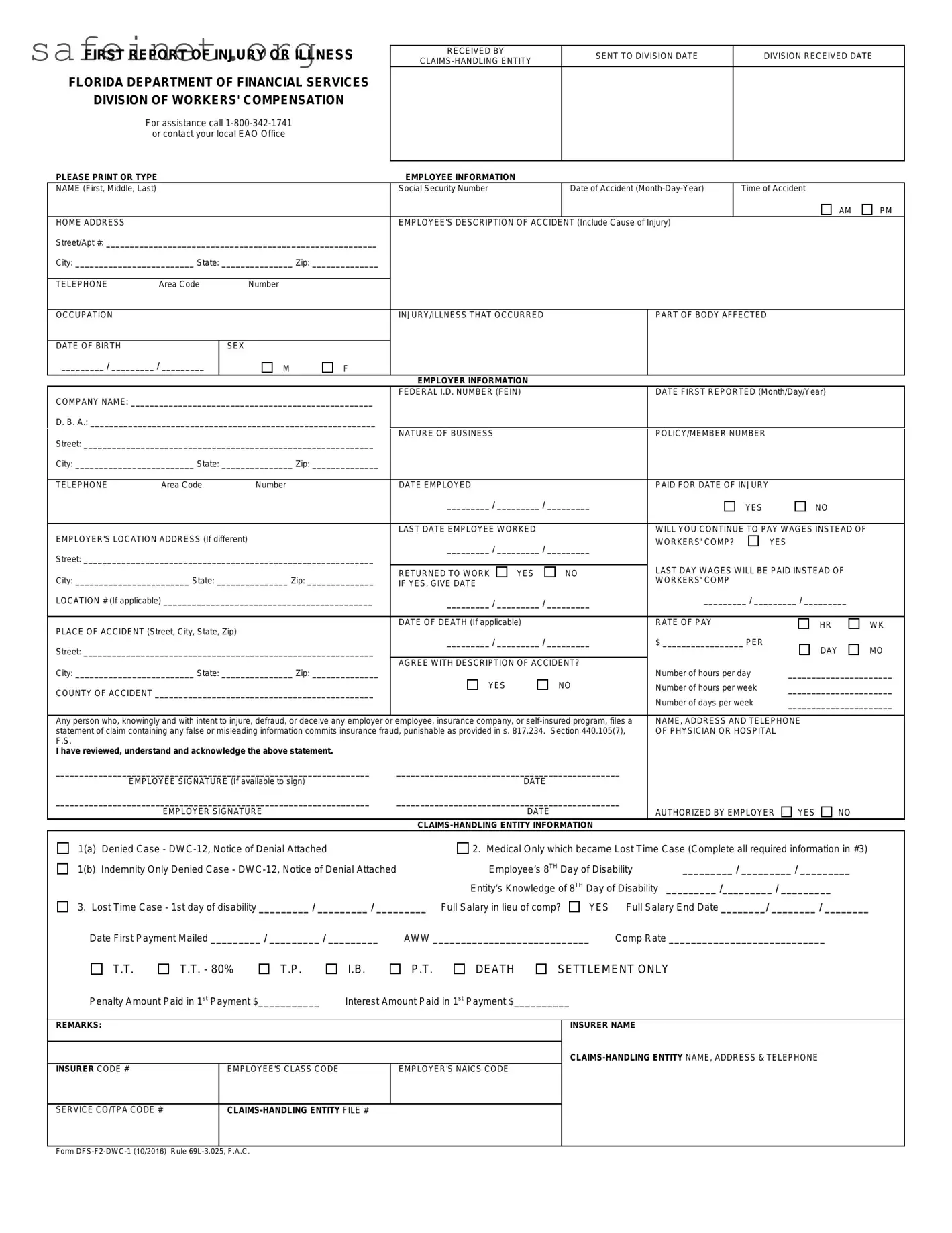The Employee’s Report of Injury is a document that enables employees to formally report any incidents that result in injury or illness. Similar to the First Report of Injury form used in Florida, this report contains essential information regarding the employee, the nature of the injury, and the circumstances surrounding the event. Both forms serve a critical purpose in initiating the workers' compensation claim process and documenting the details necessary for investigation and potential compensation. The information provided helps employers and insurance companies understand the specifics of the incident for proper evaluation of the claim.
The Workers' Compensation Claim Form is another document that closely resembles the First Report of Injury. This claim form is utilized specifically for filing a claim under workers' compensation insurance. Like the First Report of Injury, it requires detailed information about the employee, the employer, and the circumstances of the incident. Collecting this information ensures that all parties involved are aware of the claims process and helps streamline communication between the employee, employer, and the insurance agency.
The Employer’s Report of Injury is a critical counterpart to the First Report of Injury. In this document, employers provide their perspective on the incident, detailing what occurred from the company’s standpoint. Both reports work in tandem to ensure accurate documentation of the incident and facilitate a thorough investigation. Employers use this form to not only support their employees but also to protect against fraudulent claims by providing their version of events.
The Medical Report of Injury also bears similarities to the First Report of Injury. This report is typically filled out by medical professionals to provide an account of the employee's injuries from a clinical perspective. It includes information on diagnosis, treatment plans, and expected recovery times. Like the First Report, this medical report is essential in substantiating the claim and helping the insurance company determine eligibility for compensation and medical care.
The Notice of Claim is another important document that has a similar function. It serves as an official notification submitted to the appropriate authority, such as the workers' compensation board, indicating that a claim has been filed. This notice outlines the details necessary for initiating the claims process, much like the information requested in the First Report of Injury. It helps ensure that all relevant parties are informed and can take appropriate action regarding the claim.
The Incident Report template is often used for documenting incidents in a variety of workplace settings. While it may not be as specific as the First Report of Injury, it encompasses a broader range of occurrences, capturing details such as dates, times, and witnesses. Both documents ensure that a formal record exists, which is critical not only for workers' compensation claims but also for improving workplace safety practices.
The Claimant's Statement serves a role similar to the First Report of Injury, focusing on the personal account of the injured party regarding the accident. This statement is often used to gather subjective perspectives on how the incident occurred, complementing the factual information provided in the First Report. Both documents together create a comprehensive picture necessary for assessing the claim adequately.
The Return-to-Work form allows for communication between the employer and employee after an injury. Similar to the First Report, this document is integral for managing the transition back to work, specifying any necessary accommodations. It highlights the recovery progress and keeps the employer apprised of the employee's condition, thereby fostering an ongoing dialogue about the claim.
Insurance Fraud Reporting Form is another document that operates in conjunction with the First Report of Injury. Its goal is to address the potential for fraudulent claims in the workers' compensation system. This form compiles information that can be used to investigate and combat fraudulent activities, ensuring that all claims, including those reported on the First Report, adhere to ethical standards and legal requirements.
Lastly, the Settlement Agreement or Release can be considered similar as it ties into the claim process eventually. Once a claim, initiated by a First Report of Injury, has been processed and evaluated, the parties may enter into a settlement agreement. This document signifies the resolution of the claim and outlines the compensation terms, similar in its purpose to ensure proper closure and compliance with all relevant statutes.

